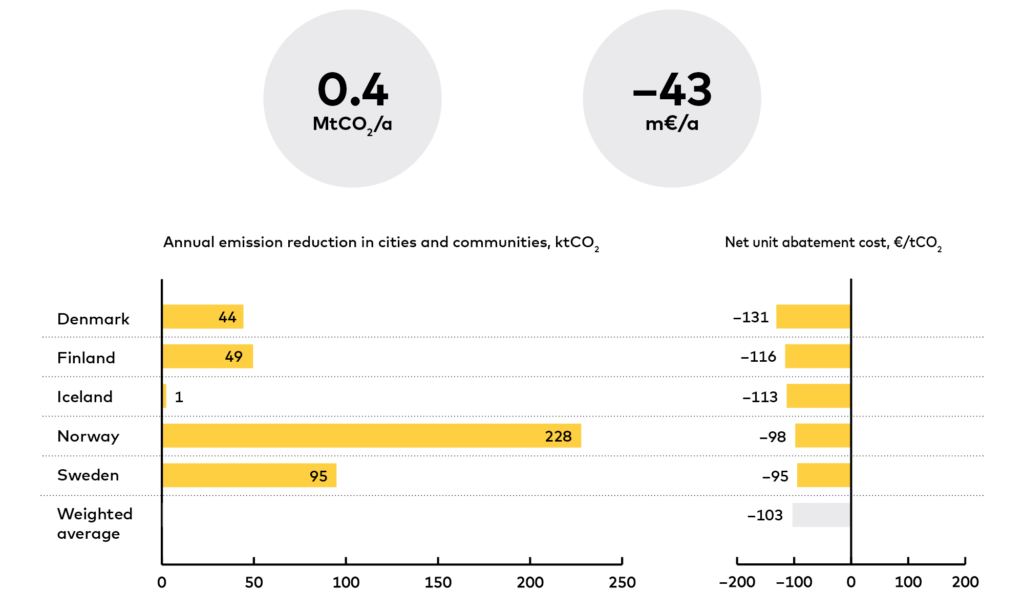Climate impact
In Norway, a growing number of diesel ferries have been replaced by electric ones. The very first electric ferry was MF Ampere and it entered service in early 2015. The vessel won the tender in a competition for the most environmentally friendly ferry.
After the reported impressive emissions (–95%) and operating cost (–80%) savings, local politicians in Hordaland tasked the agency organising public transport with attaining a significant reduction in emissions and energy usage. New requirements were set for CO2 and energy use cuts, and cuts above minimum requirements were introduced as selection criteria with a combined weighting of 30%. The public transport agency drafted new schedules that left a few minutes extra between arrival and departure to allow the electric ferries to recharge their batteries. In the end, all of the contracts tendered were won by fully electric ferries.
The climate impact of an electric ferry depends on the emissions of the electricity used and how much diesel it replaces, which again is determined by the capacity, length and frequency of the ferry service. If all ferry connections shorter than 60 minutes were electrified in the Nordics, we estimate it would reduce emissions by 0.4 MtCO2.
Costs and savings
Electric ferries require higher initial investment than conventional diesel options. Electric ferries are often built from lighter but more expensive aluminium and there are also the costs of the batteries, building the charging stations and potentially expanding the existing electricity grid. On the other hand, operational savings are obtained because electricity is a cheaper fuel, electric ferries consume less energy by having more efficient engines and being lighter, and electric motors require less maintenance. We estimate the weighted average abatement cost in the Nordics to be –103 €/tCO2.

Other benefits
The perks of operating an electric ferry are the absence of exhaust gases, vibrations and noise produced by a diesel engine.
Replacing fuel combustion cuts air pollution. It also reduces the need to import fossil fuels and increases energy security.
Barriers
- Electric ferries require a larger upfront investment for both the ferry itself and the charging infrastructure.
- If the electricity grid in the harbour is not strong enough to charge the batteries as fast as is needed, which is often the case in remote areas, the grid must be fortified or additional battery buffers installed at the harbour, which adds costs.
- With current technology, electric ferries are only feasible on relatively short distances (under 60 minutes and 2,000 kWh).
- The batteries require some time to recharge between trips, so schedules might need to be adjusted.
Enablers
- Governments can operate as enablers by supporting new technology innovation. In the case of Norway, a national competition was launched to provide the most sustainable ferry option, and now electric ferries are rapidly spreading.
- Carbon emissions and energy efficiency can be used as criteria in public procurement for ferry services.
- Low-cost electricity and other low operating costs support the deployment.
- In Norway, the government supports the building of battery buffers in locations where the grid is not strong enough for direct charging.
























Recommended
Have some more.